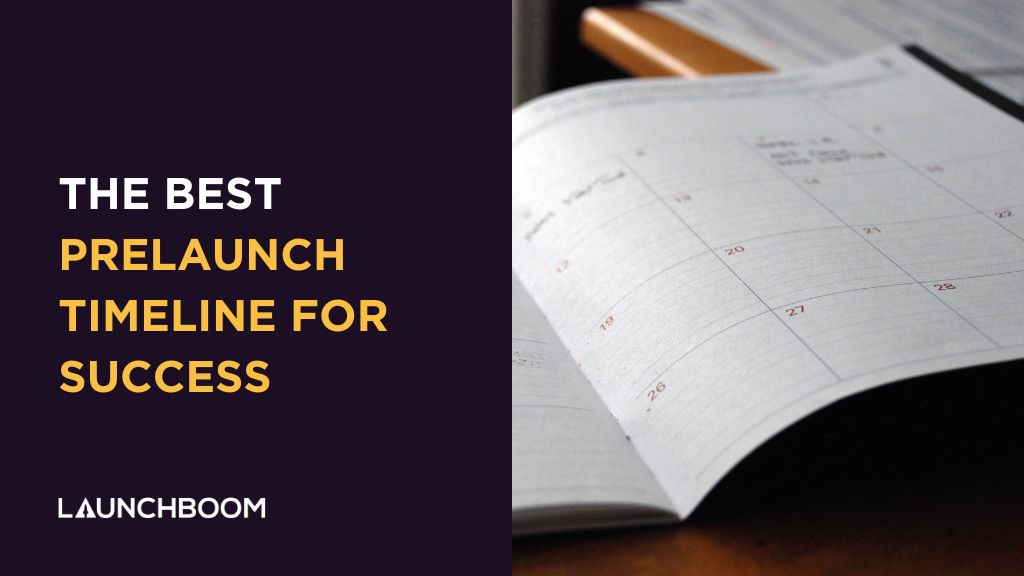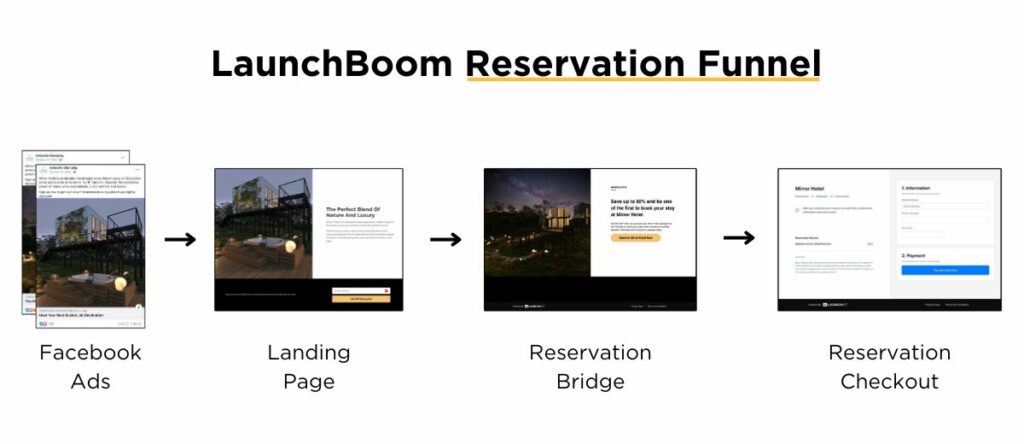
Want me to tell you the secret to a successful launch?
You must have a successful prelaunch.
Why?
Well, if you don’t do everything right leading up to pressing the *launch* button, your campaign will be dead in the water. Sounds obvious, right? But many creators don’t do it correctly.
In the past decade of launching Kickstarter and Indiegogo campaigns, I’ve unfortunately met too many people who decide to either (1) rush their prelaunch or (2) forgo prelaunch marketing altogether. Dead set on launching in the next few weeks, they decide to cast aside the necessary and proven steps to having a successful prelaunch and as a result, their campaign flops.
I hate to see it, but this is a very common story.
Because I bet all of those creators who decided to rush their prelaunch would have at least doubled their result if they had waited a few more months to do the prelaunch right.
Don’t believe me?
Well, we’ve worked with many creators after their projects fail. And the number one reason why they failed is this: they didn’t focus on the prelaunch.
Here’s three recent examples:
Igor Koshutin
- Failed campaign raised $12,345
- LaunchBoom campaign raised $108,638
- He saw an 8.8 times increase in funding
Simon Lasnier
- Failed campaign raised €27,617
- LaunchBoom campaign raised €159,576
- He saw a 5.8 times increase in funding
Audrey Lim
- Failed campaign raised $24,713
- LaunchBoom campaign raised $150,210
- She saw a 6.1 times increase in funding
Each of these three creators took the necessary time to follow LaunchBoom’s prelaunch strategy. And each of these three creators multiplied their funding by at least 5 times.
Now before I answer the question about prelaunch timeline, we need to zoom out and talk about the overall launch strategy.
Contents
The most effective crowdfunding launch strategy
The crowdfunding launch strategy that gets the best campaign results is pretty simple. I like to break it down into three steps:
- Build a prelaunch email list: use Meta ads to drive traffic to a LaunchBoom Reservation Funnel and build an email list that’s 30 times more likely to buy your product.
- Get funded the first day: use your email list to hit your funding goal on day one. This will boost your campaign in the rankings and give you free traffic from Kickstarter or Indiegogo. If done right, you will see 20-40% of the funding on your campaign come from the platform itself.
- Use the momentum to raise a lot more: use the social proof of your campaign getting funded on day one to continue driving sales with paid media and PR.
Each step in the strategy depends on the previous one. This means that if you don’t do the prelaunch right, nothing else will work. That’s why the prelaunch is so important and that’s what we’ll be diving into for the rest of this blog.
How to build a successful prelaunch
The entire point of the prelaunch is to build an email list of people that can’t wait to buy your product. You will use this audience to get you funded on day one. Getting funded on day one will boost you in the rankings on the crowdfunding platforms which will give you free traffic. Getting funded will also increase your social proof, which you can leverage to continue driving high converting traffic from paid media.
None of that is possible without nailing the prelaunch, so let’s talk about how.
To build a highly qualified email list, you must use a LaunchBoom Reservation Funnel. We were the first company to use the reservation funnel for crowdfunding back in 2016. Since that time, we’ve had over one thousands creators use our reservation funnel, meaning we have a lot of data to back up its effectiveness.
The LaunchBoom Reservation Funnel looks like this:

- Facebook ads: drive traffic with Facebook ads to a landing page.
- Landing page: explain your product and ask for a visitor’s email address to be notified when you launch.
- Reservation bridge: present an offer to become “VIP” by putting down a $1 deposit. The VIP status will give them access to an exclusive deal you define (such as a guaranteed discount or an exclusive add-on).
- Reservation checkout: allow them to enter their payment information to upgrade to VIP for $1.
Why is this so effective?
Well, we’ve found that people that put down a $1 deposit are 30 times more likely to buy your product than someone that just gives an email address.
That stat alone is why the reservation funnel is so important.
It means you can build an email list of people who want to buy your product before you launch. And because you know VIPs are more qualified, you can optimize your ads for this metric, meaning you’ll dramatically increase your return on investment. Then, when you go to launch, you simply have to send one email to this list and watch the backers roll in.
This all sounds great and all, right? But I still haven’t answered the question about timeline. Well, let’s do that now.
How long should your prelaunch be?
The short answer: however long it takes to build a big enough email list.
How long it takes to build a big enough email list is a longer answer and depends on a few things. We’ve seen a prelaunch be successful in as little as 2 weeks and another as long as 6 months. The former sounds great, but is highly unlikely. So let’s start there.
A quick AND successful prelaunch (less than 2 months) is extremely uncommon. Every quick and successful prelaunch had these two elements: A lot of luck and/or a lot of money.
You see, advertising is required to build a prelaunch email list. Identifying ads that work (meaning they get you low-cost reservations) isn’t a walk in the park. All experts in advertising follow a testing process to identify which creative, copy and audiences are scalable. When a creator tries to pull off a rushed prelaunch, they rarely get lucky and find a winning ad in the first go. Because of this, the only way to speed up the testing process is to spend more money more quickly.
For example, our most successful launch ever was for Lomi where we helped raise $7,228,029. We completed the prelaunch in 14 days, but we spent $84,667.31. We had to spend a lot to accelerate the learning process with advertising. Most creators don’t have that type of budget.
On the other hand, a recommended prelaunch timeline (2 to 4 months) is typically less expensive and more successful. That’s because you have ample time to systematically test your ads and find the winning combination of creative, copy, and audience targeting. Once you find the winning ads, you can begin to scale up your ad budget with confidence.
If it’s not clear, I’ll make it clear now: the example of Lomi is an outlier. Every single one of our other successful campaigns opted to take more time in the prelaunch, which led to less overall ad spend and a higher return on their investment.
Choosing the best prelaunch timeline
In the end, there isn’t a hard and fast rule for how long the prelaunch should be. It all boils down to how much risk you want to take. The fact that launching a product is already risky enough on its own, would make me steer towards the less risky prelaunch strategy.
Broadly speaking, there are two options you have for prelaunch:
- High risk option: very short prelaunch of less than 2 months. You either have to get really lucky with your ads or be willing to spend a lot of money very quickly. The chance of getting a high return on your investment is low.
- Low risk option (recommended): normal length prelaunch of 2 to 4 months. You have enough time to systematically test your ads, find the winners, and scale without counting on luck. The chance of getting a high return on your investment is much higher.
I hope it’s clear by now that a rushed prelaunch is playing with fire. I have very rarely seen a good reason for sticking to a rushed timeline, which is why I encourage creators to consider the trade-offs when choosing this option. In almost all cases, a rushed prelaunch will lead to more stress, worse launch results, and lower ROI.
Yes, the recommended timeline for prelaunch may take longer than you want, but how much are better campaign results and the long-term success of your business worth to you? I’d bet it’s probably worth quite a lot.




